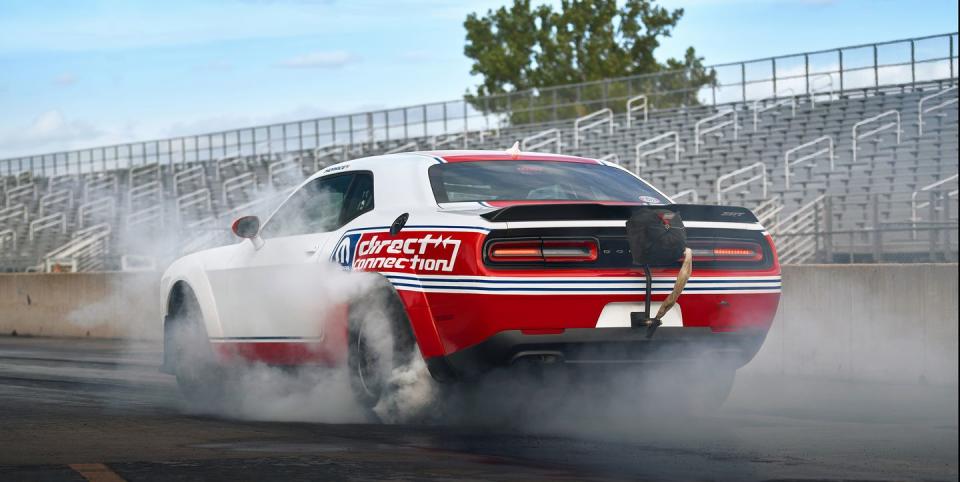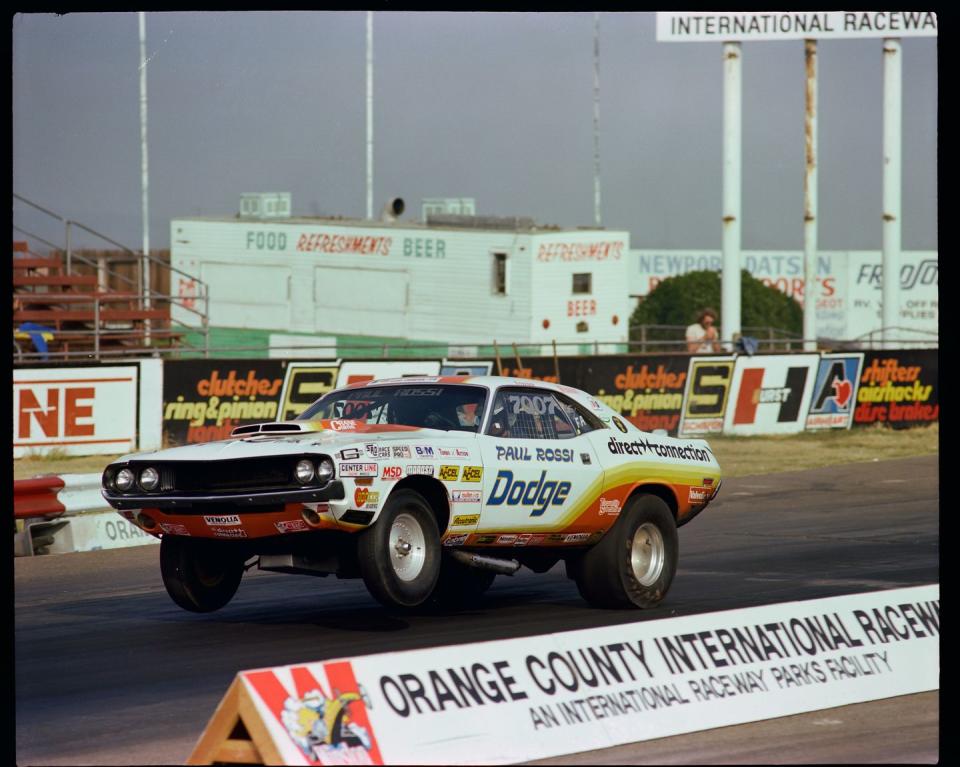Dodge Direct Connection Will Build You an 885-HP Challenger With a Full Warranty

With the return of the Direct Connection performance parts program, Dodge is opening another chapter in the story of its internal combustion muscle cars. Electrification is just around the corner courtesy of Dodge’s upcoming eMuscle program, so on its face, the rollout of Direct Connection might seem somewhat ill-timed. In order to get a better understanding of the automaker’s hopes for Direct Connection and the related Power Broker program, Road & Track sat down with Tim Kuniskis, CEO of Dodge, to discuss the brand’s latest high-horsepower onslaught.
Dodge’s Direct Connection program originally launched at dealerships back in 1974, serving as a factory source for performance parts and technical information to get the most out of your Dodge race car. In fact, Direct Connection was the first program of its kind in the industry, soon inspiring Chevy and Ford to launch their own factory-backed performance parts divisions. The original Dodge program ran until 1987, when it was rebranded as Mopar Performance Parts. The decision to resurrect Direct Connection was partly inspired by the current state of the Mopar Performance Parts catalog, specifically its focus on vintage products, according to Kuniskis.
“We’ve had performance parts through Mopar, but quite frankly, a large portion of what the customers were doing, we weren't offering,” Kuniskis told R&T. “They were modifying Scat Packs, modifying Hellcats and modifying Redeyes. We had a stronger presence in the vintage parts and less in the modern Mopar stuff. That was an opportunity for us.”

Kuniskis notes that nearly half of today’s Dodge muscle cars owners have modified their vehicles in some capacity. To that end, the company was interested in bringing the money being spent in the aftermarket back in-house.
“It's a huge side business,” said Kuniskis. “ It’s about a $23 billion industry if you go to SEMA and look at all of the modifications that are out there in the aftermarket. It’s a huge opportunity that we were barely tapping into. That’s the business case.”

While Kuniskis was happy to praise much of the work being done in the aftermarket, he didn’t hesitate to detail his hangups with the industry as a whole. Kuniskis explained that a lack of transparency, coupled with vast differences in parts quality from one outfit to the next, hurts the customer experience. If something goes wrong as a result of an aftermarket part you’ve installed, your Dodge dealer might not be able to help you out. Kuniskis knows that customers are going to continue to mod their muscle cars whether the automaker explains the consequences or not. That isn’t a situation that Dodge wants to be a part of any longer.
“The thought is, we know how to modify these cars, we’ve engineered them from the beginning,” said Kuniskis. “Let’s modify them for performance, certify them for emissions, and cover them under the warranty. The customer is going to do it anyway. They’re going to be okay with the warranty, and we don’t need any conflict with them if they have a problem, and lastly, they are safe from an emissions standpoint.”

Dodge has yet to unveil the full catalog of Direct Connection parts, but the automaker shared a few highlights coming to the Challenger lineup. The fun begins with the Direct Connection Tuner, an OBD II engine tuner that lets customers download a variety of 50-state legal tunes straight from Dodge. These ECU tunes can be combined with a variety of the automaker’s new Stage Kits, which are pre-configured for Hellcat or Redeye models. The Pre-Stage Kit adds five horsepower to Hellcats and Redeyes by way of a recalibration, and gives Redeyes a new thermostat and air cleaner. The Stage 1 Kit for the Challenger Hellcat brings the 3.17-inch supercharger pulley from the Hellephant crate engine, which combines with a tune to raise output to 757 horsepower and 696 lb-ft of torque. The Redeye Stage 1 Kit brings new software as well, bumping output to 840 horsepower and 770 lb-ft in High Octane Mode. Redeye customers can also choose the Stage 2 Kit, not available for regular Hellcats, which adds the Hellephant pulley to bring power up to 885 horsepower and 787 lb-ft.

Kuniskis notes that these upgrades have long been planned for the Challenger and Charger alike, and these vehicles have already been proven capable of withstanding the increased output. And given the fact that these power increases come with minimal hardware upgrades, Kuniskis suggests you look at it this way: Dodge has already been selling vehicles capable of nearly 900 horsepower—they’ve just been limited up until now.

 Yahoo Autos
Yahoo Autos 